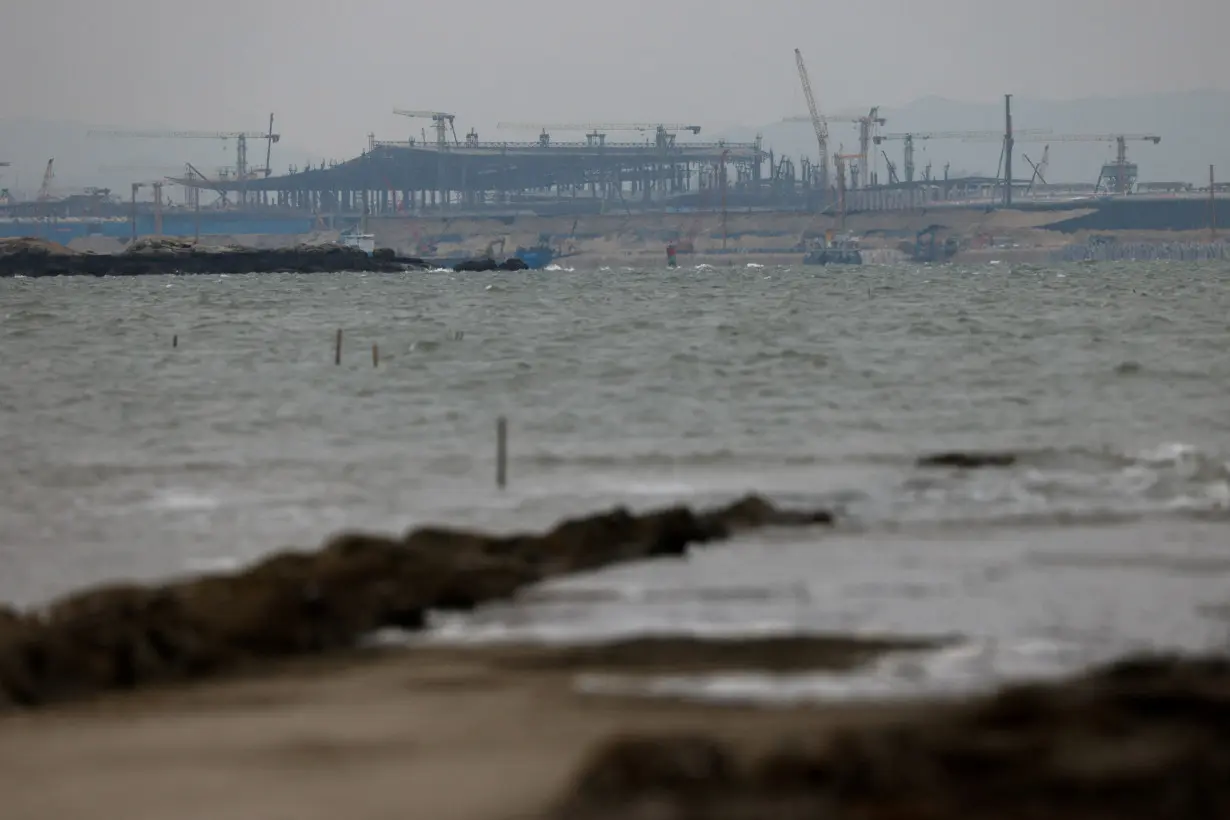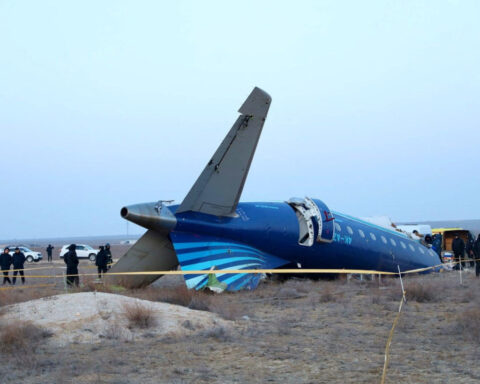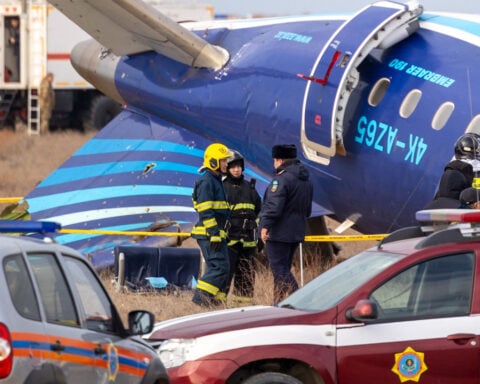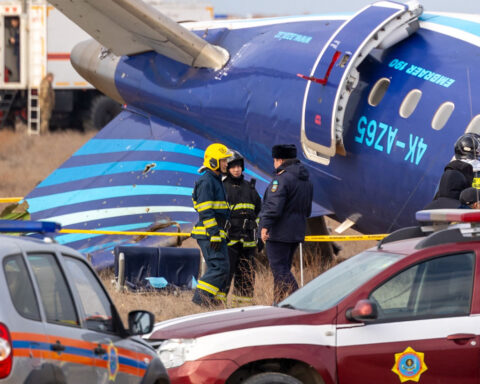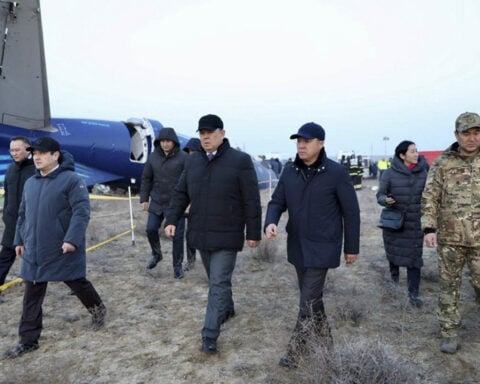By Ben Blanchard and Ryan Woo
TAIPEI/BEIJING (Reuters) -Taiwan said on Friday China's decision to open new air routes that run close to two Taiwanese-controlled islands was a flight safety risk taken without consultation, and said it would demand any aircraft using them be asked to turn around.
Taiwan's government expressed anger in January after China "unilaterally" changed a flight path called M503 close to the sensitive median line in the Taiwan Strait. China claims democratically-governed Taiwan as its own territory.
The new Chinese routes to China's Xiamen and Fuzhou cities, called W123 and W122 respectively, connect to the M503 flight route, and run alongside existing routes to the islands of Kinmen and Matsu, which have regular flights to and from Taiwan.
China had said in January it was opening routes from west to east - in other words, in the direction of Taiwan - on the two flight paths from Xiamen and Fuzhou, but had not until now announced when they would go into operation.
China's civil aviation regulator said in its statement on Friday those routes were now in operation, adding that from May 16 it would "further optimise" airspace around Fuzhou airport.
It did not elaborate, but that is four days before Taiwan President-elect Lai Ching-te is inaugurated, a man Beijing believes is a dangerous separatist. Lai has repeatedly offered talks with China but has been rebuffed.
A senior Taiwan official familiar with the island's security planning said the flight route announcement was part of a pattern of pre-inauguration pressure from China.
"They want us to cave in, make compromises and change our behaviour," the person said, speaking on condition of anonymity as they were not authorised to speak to the media.
China's Taiwan Affairs Office did not immediately respond to a request for comment.
China's regulator said that the changes to the flight paths will help meet the "development needs" of flights along the Chinese coast, ensure flight safety, enhance the ability to respond to thunderstorms and improve normal flight operations.
Taiwan's Civil Aviation Administration said the measure seriously impacted aviation safety in Taiwanese airspace, calling it a unilateral move taken without consultation.
At its nearest point, close to Kinmen, there is only a 1.1 nautical mile distance between the Chinese and Taiwanese flight paths, it said.
"The airspace between the two sides is very small, and there are certain risks," it added.
CONTROLLED AIR SPACE
Taiwanese air traffic controllers will "strongly request" their Chinese counterparts guide any aircraft away when an aircraft approaches Taiwan's air space, it said.
Chinese aircraft are not permitted by Taiwan to fly in the airspace Taipei controls around Kinmen and Matsu.
The strait's median line had for years served as an unofficial demarcation between Taiwan and China and was not crossed by combat aircraft from either side.
But China says it does not recognise the line's existence and Chinese warplanes now regularly fly over it as Beijing seeks to pressure Taipei to accept its sovereignty claims.
Flights to and from Taiwan and China's Xiamen and Fuzhou take a circuitous route skirting the median line rather than flying directly across the strait. Domestic Taiwanese flights to Kinmen and Matsu fly directly across the strait.
Taiwan has complained about the M503 route before, in 2018, when it said China opened the northbound part of it without first informing Taipei in contravention of a 2015 deal to first discuss such flight paths.
The Taiwan government rejects China's sovereignty claims and says only the island's people can decide their future.
(Reporting by Ben Blanchard and Ryan Woo; Additional reporting by Yimou Lee in Taipei; Graphic by Jackie Gu; Editing by Christopher Cushing, Jamie Freed and Angus MacSwan)

 4 adults found dead of apparent carbon monoxide poisoning in New Hampshire home, officials say
4 adults found dead of apparent carbon monoxide poisoning in New Hampshire home, officials say
 Woman, 22, accused of stabbing victim over bad tip after pizza delivery in Kissimmee
Woman, 22, accused of stabbing victim over bad tip after pizza delivery in Kissimmee
 The bird at the center of the worst single-species mortality event in modern history isn’t recovering, scientists say
The bird at the center of the worst single-species mortality event in modern history isn’t recovering, scientists say
 China's CATL to seek Hong Kong listing
China's CATL to seek Hong Kong listing
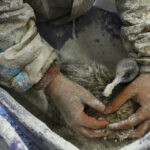 Russia declares federal emergency over Black Sea oil spill
Russia declares federal emergency over Black Sea oil spill
 Holiday shoppers increased spending by 3.8% despite higher prices
Holiday shoppers increased spending by 3.8% despite higher prices
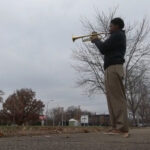 Louisville teen playing trumpet outside mall gets surprise PS5 from stranger
Louisville teen playing trumpet outside mall gets surprise PS5 from stranger
 Jim Larrañaga stepping down at Miami, Bill Courtney to take over, AP source says
Jim Larrañaga stepping down at Miami, Bill Courtney to take over, AP source says
 Iowa WWII veteran known as 'The Drummer' shares gift of music this holiday season
Iowa WWII veteran known as 'The Drummer' shares gift of music this holiday season
